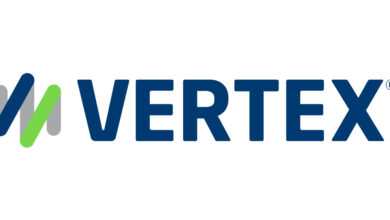‘Artificial Intelligence — A Primer for State and Local Governments’

If you’re at all like me, you find new artificial intelligence technologies and generative artificial intelligence (GenAI) advances to bring a mix of excitement, questions, interest and skepticism — all at the same time. It is not just that the products and services are changing so rapidly that it is hard to keep up. There is also the sense that AI and GenAI are different than other advances in tech, almost like the invention of the Internet on steroids.
So how can we make sense of what is going on right now with AI and GenAI? What are the answers to some basic questions that can help state and local governments?
What cybersecurity protections are paramount as we use our data in new ways? Perhaps most important, where is this heading and how can we take advantage of these amazing advances?
To help answer these questions I was delighted to learn that Alan Shark has published a new book on the topic that I just completed. In this blog, I interview Shark on the book and share some insights from reading it.
I have known Alan Shark, the executive director of the Public Technology Institute (PTI), for more than a decade. He is a thought leader who offers unique perspectives on government technology for local governments, and shares his trends annually in a joint NASCIO-PTI online event.
He has also authored numerous books on state and local technology leadership and related topics.

His latest book, Artificial Intelligence – A Primer for State and Local Governments: Everything You Need to Know Since Yesterday is described this way on Amazon.com:
“This primer was designed to serve as a comprehensive guide for state and local government officials, employees, and policymakers seeking to understand and leverage AI’s potential. We delve into the core concepts of AI technology, exploring its various applications within the government sector. Practical examples highlight how AI is already utilized to address real-world challenges municipalities and state agencies face. We recognize that alongside AI’s immense potential lie critical considerations. This primer addresses the ethical implications and potential biases inherent in AI systems. We explore strategies for responsible AI implementation, ensuring transparency, fairness, and accountability in government operations. Whether you are a policymaker crafting legislation, a public administrator overseeing service delivery, or a technologist implementing AI solutions, this primer equips you with the knowledge and tools needed to make informed decisions and drive positive outcomes for your community.”
I asked Shark three questions on his new book:
Dan Lohrmann (DL): Why did you write this book right now?
Alan Shark (AL): This book fills a genuine need for unbiased comprehensive information on AI in the state and local government environment. I kept getting questioned about AI and saw so much misleading information regarding “AI-powered” hype. I wanted to provide an impartial foundational book to help state and local governments navigate the possibilities and potential pitfalls. While things are changing almost daily, this book can endure for some time given the way it is written and organized — but I will probably need an update in about a year. We are at a moment in time when we should embrace what AI can at least do for us professionally. We should experiment and share in best practices.
DL: What one or two things do you think every local government needs to do now on AI?
AS: While there are many legitimate concerns, state and local governments should not let overly lawyered and lengthy guidelines and inflexible policies get in the way. I believe we need guiderails not guardrails. Practically speaking, you only need about two pages to outline what is permissible and what is not with the use of AI in a government setting. Yes, the public probably will expect something more grandiose — and that’s okay — but that serves a different purpose and shouldn’t impede AI innovation.
The most important thing for state and local governments to do now is to educate their workforce, and IT can serve as “informational central” and offer safe “AI playgrounds” where people can experiment with productivity tools and applications without fear of doing something destructive.
DL: You wrote about many downsides of AI in several areas. What worries you most about AI in 2024?
AS: Regarding the downsides (there are many), I worry about data quality. AI lives on data, and many government entities have been sloppy with data classification and quality. As a result, AI may work perfectly in amplifying our intentional or unintentional biases and prejudices that could lead to poor decision-making — or worse. I am concerned about cybersecurity of AI systems and the potential for human over-reliance on it. I also worry about carelessness in unintentionally disclosing personal data. Finally, with the presidential election coming, I am deeply worried about AI-generated deepfake stories, videos and photos, as “seeing is believing” is no longer a viable standard in the AI digital world.
FINAL THOUGHTS
I really enjoyed this book. The cartoons are fun and thought-provoking, and the writing style is easy to read. The book is full of excellent references to relevant materials on important questions for leaders to be asking. The book covers these topics under these major headings/chapters:
- An Intro to AI
- Contemporary Issues in AI — A Deeper Dive
- Understanding AI in the Public Sector: Policies, Guidelines, and Governance
- All Things Data
- Citizen Engagement
- AI and Cybersecurity
- Education and Training (Humans)
- AI and the Future of Everything
- Digital Definitions
I found the material to be helpful and recommend this book as a good starting point on AI and GenAI for many, and also an excellent set of next steps for leaders who are early in their government AI journey.



